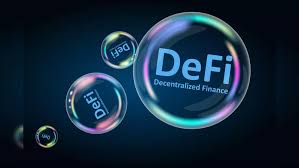Online banking has completely transformed the financial landscape over the past few decades. Initially, it was a simple and convenient way for customers to manage their finances without stepping into a bank. However, as technology continues to evolve, online banking has shifted from a mere convenience to a complex system that is embracing decentralization. This shift has sparked a conversation about the future of online banking and its potential to redefine how we manage money.
Today, online banking isn’t just about checking balances or transferring funds. It encompasses a wide range of services, from digital wallets and peer-to-peer payments to investment management and cryptocurrency trading. In this post, we will explore how online banking has evolved and what decentralization might mean for the future of financial services.
The Early Days of Online Banking
The concept of online banking began in the 1990s, when banks first introduced basic online services. At this point, online banking was primarily about offering users the ability to check their bank account balance, transfer funds, and view recent transactions. These services were a convenient alternative to visiting physical bank branches, saving customers time and effort.
The internet was still in its infancy during this period, so online banking platforms were relatively simple and easy to navigate. These early versions of online banking were often limited to basic account management tasks. However, as technology advanced, so did the services offered by online banks. Over time, more complex features such as bill payments, loan applications, and mortgage management became available, providing customers with even greater convenience and flexibility.
By the early 2000s, online banking had become a standard service offered by most major banks, allowing users to manage their finances from the comfort of their homes or offices. As the internet grew faster and more reliable, the online banking industry flourished, becoming a staple of modern-day finance.
The Rise of Mobile Banking
As smartphones became an integral part of everyday life, mobile banking quickly gained traction. In the late 2000s and early 2010s, banks began offering mobile apps that allowed users to perform all the tasks they could complete on a desktop computer directly from their phones. This development was a game-changer in the world of online banking, allowing users to access their accounts anytime and anywhere.
Mobile banking apps not only offered basic features like balance checks and fund transfers, but they also incorporated new tools like check deposit via camera, instant bill payment, and real-time transaction alerts. The convenience and accessibility of mobile banking helped expand the user base of online banking services, especially among younger generations who valued the ability to manage their finances on the go.
This era also marked the beginning of a shift toward digital-only banking institutions. Many startups entered the online banking space with a focus on mobile-first experiences, offering users innovative features like budget tracking, goal setting, and savings tools. These digital banks (often referred to as “neobanks”) disrupted traditional banking models by providing a seamless, app-based experience that appealed to tech-savvy consumers.
Security Concerns and Regulatory Challenges
With the growing popularity of online banking came an increase in concerns about security and privacy. As more sensitive financial data was stored and transmitted online, the risk of cyberattacks and data breaches became more prominent. Banks had to invest heavily in encryption technology, multi-factor authentication, and other security measures to protect their customers’ information.
At the same time, regulators began to introduce new laws and frameworks to ensure that online banking institutions adhered to strict security protocols. For example, the European Union introduced the General Data Protection Regulation (GDPR), which set high standards for data privacy and protection. In the U.S., the Federal Reserve and other agencies implemented guidelines to ensure that financial institutions adhered to robust security practices.
Despite these measures, online banking has still faced its fair share of challenges related to fraud, phishing scams, and identity theft. As online banking services have become more sophisticated, cybercriminals have found new ways to exploit vulnerabilities, leading to ongoing efforts to improve security and protect consumers from fraud.
The Emergence of Decentralized Finance (DeFi)

One of the most exciting developments in online banking is the rise of decentralized finance (DeFi). DeFi refers to a set of financial services and applications built on blockchain technology that operate outside the control of traditional financial institutions. These platforms offer services such as lending, borrowing, trading, and investing without the need for intermediaries like banks.
Decentralized finance has the potential to revolutionize online banking by giving individuals greater control over their financial transactions and assets. With DeFi platforms, users can access a wide range of financial services directly from their wallets, bypassing traditional banking systems altogether. This shift represents a major departure from the centralized model of online banking, where banks act as intermediaries for all transactions.
In a decentralized world, online banking becomes more transparent, efficient, and inclusive. With the use of smart contracts, DeFi platforms can automate transactions and eliminate the need for third-party verification, reducing costs and increasing speed. Additionally, DeFi platforms operate on a global scale, enabling users from different countries and regions to participate in financial activities without the restrictions imposed by traditional banks.
However, decentralized finance is not without its challenges. While DeFi platforms offer greater control and flexibility, they also introduce new risks, such as smart contract vulnerabilities, market volatility, and a lack of regulatory oversight. As DeFi continues to evolve, it will be important for both users and regulators to find ways to mitigate these risks and ensure that the ecosystem remains secure and reliable.
The Future of Online Banking: A Hybrid Model?
As online banking continues to evolve, it seems likely that the future will involve a hybrid model that combines the best aspects of traditional banking with the benefits of decentralization. Traditional banks are already experimenting with blockchain technology and digital currencies, while decentralized finance platforms are gaining traction in mainstream finance.
For example, some banks are exploring the use of central bank digital currencies (CBDCs), which are digital versions of traditional currencies issued by central banks. CBDCs could offer a way for governments to maintain control over monetary policy while embracing the efficiencies of digital currencies. Additionally, some banks are partnering with DeFi platforms to offer hybrid financial products that blend the stability of traditional banking with the flexibility of decentralized finance.
As these innovations unfold, the role of online banking will continue to expand and adapt. Consumers can expect more personalized, efficient, and accessible financial services as banks and DeFi platforms work together to create a more inclusive financial ecosystem.
Conclusion: A New Era of Online Banking
The evolution of online banking has been nothing short of remarkable, and we are only beginning to scratch the surface of what the future holds. From its humble beginnings as a simple convenience to its current role as a cornerstone of modern finance, online banking has come a long way. The rise of decentralized finance adds a new layer of complexity and opportunity, promising to redefine how we interact with money in the digital age.
As technology continues to advance, the boundaries between traditional banking and decentralized finance will blur, creating new opportunities for innovation and growth. Whether you’re a consumer, a business, or a financial institution, it’s clear that online banking is no longer just about convenience—it’s about shaping the future of finance itself.


